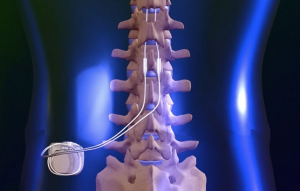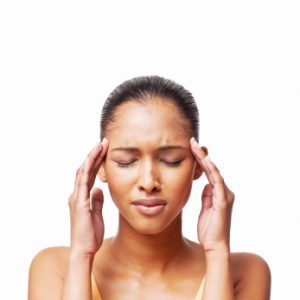12 Aug Spinal Cord Stimulator Implants for Chronic Headaches
FAQs on Spinal Cord Stimulation for Headaches
Spinal cord stimulation provides a more potent way to manage chronic headaches unresponsive to conventional treatments. The International Headache Society has also attested the relevancy of neuromodulation for long-term management of incessant, chronic daily headaches and prevention of associated disability.
Chronic headache refers daily headaches for at least 15 days a month over a period of three months. Symptoms may vary from moderate to severe pain to those associated with chronic migraine. Patients may experience pulsating, throbbing sensation, pressing or tightening feeling, intense burning or piercing pain, or pain on one side of the head.
Why do we experience chronic headaches?
- Persistent tension and stress leading to increased frequency of headaches
- Migraine
- Mixed headache where migraine and tension-type complement each other
- Cluster headaches that revisits after an interval
- Sinus headaches leading to constant pain in the forehead and cheekbones
- Neuralgia in the face area
- Chronic progressive, inflammatory headaches due to disorder of the brain or skull
How common is the occurrence of headache?
Migraine affects about 28 million Americans. An equal number of people feel the pinch due to other types of headaches. At least 10% of these do not respond to conventional treatments. More effective spinal cord stimulation is the last resort for them to get relief from chronic headaches.
How effective is spinal cord stimulation in treating headache?
- Spinal cord stimulation reduces occurrence of neuralgia-linked headaches by 90%.
- About 65% improvements in chronic migraine and other types of headaches a year after SCS implant. (Neurostimulation, 2011)
- At least 71% migraine patients have more than 50% pain relief (average 60%) and over 37% gave up painkillers. (Neuromodulation, 2015)
- SCS therapy was found to be beneficial for those with cluster headaches. (Current Painand Headache Reports, 2013)
What are components of a spinal cord stimulator?
- A stimulator device of the size of a poker chip that produces mild electrical signals
- Electrode leads that deliver electrical pulses to the spine
- A wire connecting both
- A hand-held remote control to operate and reset the spinal cord stimulator
How does a spinal cord stimulator treat headache pain?
Spinal cord stimulation disrupts pain signals caused by headache and this provides pain relief to patients. The stimulator sends mild electrical pulses to the epidural area and the process interrupts pain signals transmitted through the spinal nerves. Non perception of pain signals by brain allows patients to have excellent pain relief from chronic headaches.
Does spinal cord stimulator eliminate the source of pain?
Spinal cord stimulation interrupts pain signal transmission to ensure that pain is not perceived by the brain. It does not eliminate the cause of pain.
Am I a candidate for spinal cord stimulation?
People suffering chronic daily headaches can consider spinal cord stimulator implant if they have
- persistent headaches
- chronic headaches not relieved by any other treatment
- no painkiller dependency
- SCS trial succeeds in providing pain relief from chronic headache
- no serious neurological deficit
How is the trial spinal cord stimulation performed?
The trial test is performed to ensure that spinal cord stimulation is suitable for a patient in relieving pain related to chronic headache. An external stimulator is used during the trial. It is connected to electrode leads inserted into the epidural area next to the spine under local anesthesia.
If trial test provides more than 50% pain relief from chronic headache during the 7-day assessment, it is considered a success and patient is suggested for a permanent spinal cord stimulator implant.
What is done during the permanent implant?
- Patient sleeps under the effect of general anesthesia.
- An incision is made to place electrode leads near the spine.
- A second incision, bigger than the first one is made to implant the spinal cord stimulator under the skin.
- Both are connected using a wire that passes through soft tissues.
- A test run is done and incisions are closed.
How long does the implant procedure take?
Spinal cord stimulator implant to manage chronic headaches requires about 1 to 2 hours.
Do I need to stay in the hospital?
It is an outpatient procedure and patients are discharged after a brief monitoring.
Is there any pain, discomfort, or soreness?
There will be mild pain. You will begin to experience pain relief as soon as the implant is performed. However, there will be soreness and discomfort at the incision site for one or two days.
What are post-operative restrictions for speedy recovery?
- No deep bath or shower
- Ensure incisions remain dry and clean
- No driving for 4 weeks
- No twisting or bending for 6 weeks
- No rigorous activities for 6 weeks
- Minimize climbing stairs
How long does spinal cord stimulator last?
Once implanted, spinal cord stimulator remains in the body for the rest of the life unless removed. There is no need to replace it. You just need to replace its batteries in every 5 to 10 years depending on the usage.
How big is a spinal cord stimulator?
A spinal cord stimulator resembles a poker chip in size.
How do I control the spinal cord stimulation for headaches?
A handheld remote programmer helps control, program, and adjust the device to deliver the preferred level of sensation.
Is the implant covered by insurance?
Yes, it is covered by most insurance providers.
What are side effects associated with spinal cord stimulation?
Surgical implant may lead to avoidable complications, such as nerve damage, bleeding, and infection. In most cases, lack of surgeon expertise is the reason behind these complications. Lead disposition is another factor that may necessitate revision surgery. However, this is not very frequent.
References
Neurostimulation Gets CE Mark Approval for Chronic Migraine. Medscape. Sep 07, 2011.
De Agostino R, Federspiel B, Cesnulis E. High-cervical spinal cord stimulation for medically intractable chronic migraine. Neuromodulation. 2015 Jun;18(4):289-96
Martelletti P, Jensen R, Antal A, et al. Neuromodulation of chronic headaches: position statement from the European Headache Federation. The Journal of Headache and Pain201314:86
Wolter T. Neurostimulation for chronic cluster headache. Ther Adv Neurol Disord. 2012 May; 5(3): 175–180.



